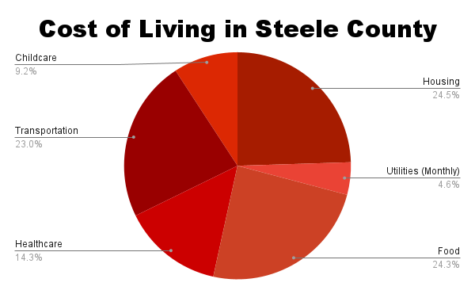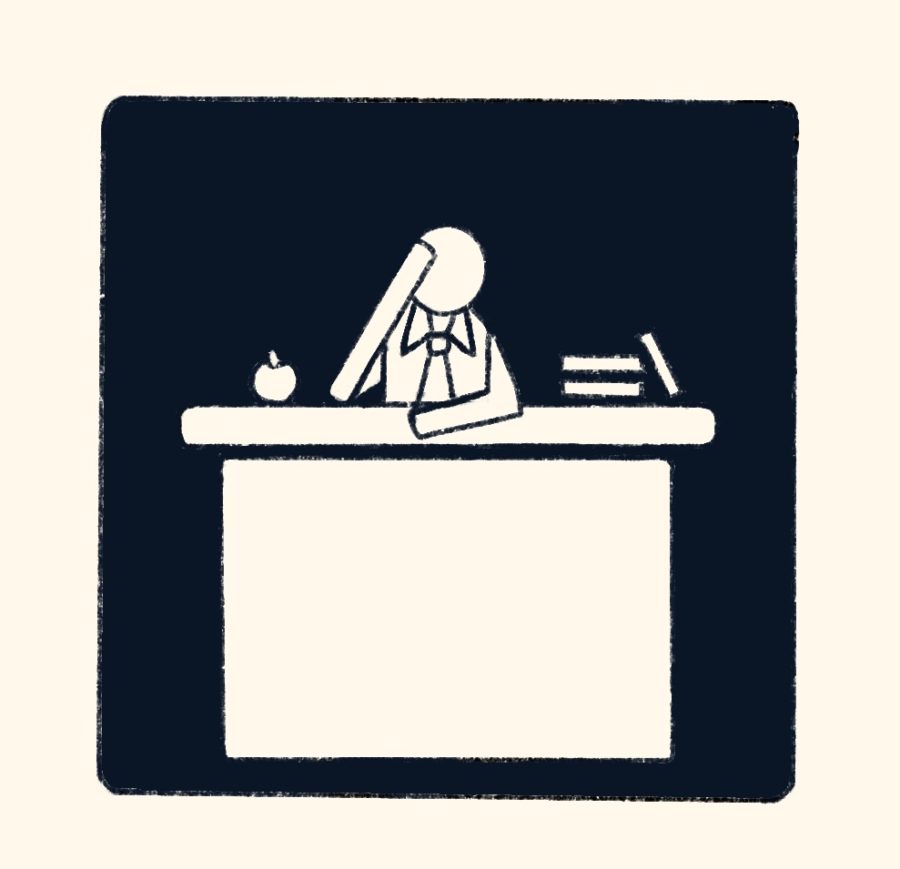Teacher shortage is sweeping the nation
Teachers are leaving the workforce as they feel the burnout of their intense workload.
February 28, 2023
America’s educators have borne unimaginable challenges in the last three years. As a result, many educators have decided to leave the workforce and first-year teachers have come to the realization that teaching, in some circumstances, does not outweigh the troubles faced daily. For instance, educators have faced the combination of the COVID-19 pandemic, safety concerns, issues of lack of support and low pay. According to the Bureau of Labor Statistics data, around 300,000 public-school teachers have left the field between February 2020 to May 2022, showcasing a nearly three percent drop in the workforce.
As a nation many factors for the shortage
COVID-19 Pandemic and Safety Concerns
The effects of the COVID-19 pandemic impacted everyone in society, but especially educators. The rates of teachers thinking about leaving the profession earlier than they had planned is at a staggering 55 percent, according to a survey conducted by the National Education Association (NEA). This means that the effects of the pandemic had changed educators’ outlook on the profession based on the outcome of the pandemic.
Not only has the pandemic dramatically increased teachers leaving the profession, but so has the rise of danger within the school system. For instance, the headlines of popular news stories are scaring teachers out of a career in education. A story from EducationWeek is informing teachers of the dangers starting to crawl through their school. School shootings are becoming a huge reason why teachers want to be done as their lives are on the line. Many educators are saying that this is not the job they signed up for.
Lack of Support
The long standing issue of insufficient support has made thousands of teachers leave the classroom. Educators have expressed the concerns of not feeling support from administration as many teachers explain their concerns with lack of communication with staff members, withholding necessary resources for certain curriculums, student discipline issues and administrative inconsistency. Due to such circumstances, educators around the nation are constantly faced with the inability to better themselves whilst impacting students positively.
Teaching has always been a demanding profession, but over the past three years the demands have increased. Teachers have now become more pressured and it has become harder to retain educators to the workforce. Educators are being constantly criticized by parents on their performance. Parents are now backlashing on educators teaching as their child’s grades, motivation and performance has been negatively affected.
Educators’ needs are just as important as a parents or a student’s needs. An article from Education Advanced explains ways administrators can improve themselves to support teachers. An administrator is responsible for managing teachers and to provide support, which will overall make teachers better educators and improve students outcomes.
Principal Kory Kath said, “It is critical to have an open door policy so that as teachers have needs that they can come meet with me. This is about any topic and any way that they may need support. We also have a Wellness Committee that seeks to connect all staff as a community and celebrate all of the great work everyone does for students.”
It is also important to have great communication with staff members. At the OHS, there is a Department Leadership team that brings topics and ideas of how they can better the school and be informed about the on-going needs of teachers, students and families.
For educators to stay, administrations need to be understanding and encouraging as many teachers decide to either leave or stay based upon the support they receive from their administrators. If an administrator is friendly and supportive, teachers are more likely to stay in the education workforce due to feeling appreciated. Otherwise teachers find it difficult to rely on themselves for support compared to other educators who have the backbone given to them by their administration.
Director of Human Resource and Student Affairs Ms. Chris Picha said, “Being appreciative of the profession and how hard they work, I think if we all take note of that, that would help retain but it will also help teachers become better. It is an incentive for them.”
Administrators from schools around America need to remember that teachers’ working conditions are students’ learning conditions.
Low-Paying Salaries
Not only are the low-paying salaries making teachers leave the classroom, but also college students are steering away from the pursuit of education. For instance, a 2022 report by the The American Association Colleges for Teacher Education (AACTE) found that the number of students completing education programs in the U.S. dropped by more than a third.
To have a degree in teaching, an individual must meet the minimum requirement of having a Bachelor’s Degree (BA) which requires four years to complete. At the University of Minnesota-Twin Cities, the average cost of a BA in general education is $139,000, including room and board. However, some teachers go back to school to earn their Master’s Degree (MEd), requiring an additional two years, to teach a certain curriculum as some classes require teachers to have a specific level of education. Teachers are required to have a higher degree in education when teaching concurrent classes. These classes allow students to earn college credit.
Ms. Erica Wilson a FACS teacher, for instance is one of the teachers who had to go back to school to earn her Master’s degree to teach such a course. Ms. Wilson said, “With working full time and having a family at home, finding the time to complete a Master’s program is not easy. It took quite a bit of support from my husband and parents, a dedicated diligence, and knowing with the completion of the program the opportunities it would lead to was enough intrinsic motivation I needed to keep working hard.”

Considering that educators are overworked and overeducated, they are being underpaid for all the time and effort they are putting into teaching students. A 2020-21 National Teacher and Principal Survey found that a regular full-time public school teacher worked an average of 52 hours a week, even though they were required by contract to work only an average of 38 hours. Not only are teachers facing college debt to earn a degree and a higher credential to teach a certain subject, but the cost of living is increasing. With the lack of pay, some teachers search for other options of income to make ends meet.
Owatonna
The same issue that is happening throughout the United States is also impacting teachers in the Steele County area.
A National Education Week Research Center survey conducted in 2021 after the pandemic, found that more than 75 percent of school principals and district leaders were having difficulty finding enough substitutes to cover teacher absences.
The Owatonna High School is experiencing a major decline in substitute availability and teachers in certain positions. It is impacting teachers’ preparation time as they are asked to help fill in for another teacher’s class. There are some teachers who aren’t able to even substitute for a class as they teach four classes instead of three, which means they have no preparation time nor a mental break.
Industrial Technology teacher Mr. Mitchell Dinse said, “I have four classes of my own that I am doing an overload for. Because we were not able to hire or find another Industrial Tech teacher after Mr. Tjaden retired, I am doing overload to try and keep as many sections of industrial tech classes as possible. There are days that it is definitely exhausting and that I leave school feeling worn out.”
The lack of finding teachers has also caused some teachers to feel a sense of burnout.
Math teacher Mr. Dan Saehler said, “There is a lot of pressure for other teachers to go in and sub for other teachers when they are gone.”
This is also affecting students’ learning because they are required to do an assignment independently. Student’s struggling on their assignment are not able to ask questions or receive help from their teacher.
Senior Tatum Rau said, “Having substitutes that aren’t experts in the subject they are subbing for is difficult to properly complete assignments when you’re not able to ask questions or get information from a teacher that is not knowledgeable on a subject, which can affect your learning.”
If students are not able to receive the help they need, it can impact their grades and their performance.
Mr. Saehler said, “It breaks up a routine that a teacher develops on a daily basis. If a teacher is going to be gone, it can be challenging for students to break away from the routine and understand how other substitutes or teachers are going to operate the classroom.”
The teacher shortage in America has become exponentially bad in the past few years, but there are ways school districts can keep their teachers. Administrators need to develop great communication with their staff members, understand the mental wellbeing and supplying necessary resources for educators to teach their students in an excellent manner.







